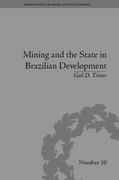Question
QUESTION 1 provide brief analysis Your entire wealth consists of the balance of your bank account, which is $W0 . You also own a painting
QUESTION 1 provide brief analysis
Your entire wealth consists of the balance of your bank account, which is $W0 . You also own a
painting which is worthless to you. You have a chance to sell the painting to a potential buyer. All you
know about the buyer is that she has a reservation price (i.e. a maximum price she is willing to pay)
r L M H { , , } with L M H (L for low, M for medium and H for high). You can make a take-it-orleave-it offer of a price P [0, ) . The buyer strictly prefers to buy the painting at price P to not buying
if and only if P r (if P = r the buyer is indifferent between buying and not buying but you can
assume that she will buy). You are selfish and greedy, that is, you care only about your wealth and
prefer more money to less.
(a) For this question assume that (1) your von Neumann-Morgenstern utility-of-money function is
U m m ( ) and (2) you assign equal probability to each of L, M and H.
(a.1) What price will you offer? [Clearly, your answer must be a function of the parameters L, M and
H; for simplicity you can ignore values that make you indifferent between two or more choices.]
(a.2) What price will you offer if W0 16 , L = 9, M = 20 and H = 33?
Now let us change the situation as follows (anything that is not explicitly mentioned remains the
same as above). Firstly, from now on assume that you are risk neutral. Secondly, assume that, instead of
one potential buyer, you face three potential buyers and you know that one buyer has reservation price
L, another buyer has reservation price M and the third buyer has reservation price H (with L M H ),
but you do not know which person has which reservation price. Of course, you also know that each buyer
knows her own reservation price. A mediator (who is not to be treated as a player) picks one potential
buyer randomly, with equal probability, and sends her to you. You then make a take-it-or-leave-it offer of
a price. If she accepts, then the transaction takes place at that price and the game ends; if she refuses to
buy at that price, then she has to leave and ceases to be a player (that is, she is no longer a potential
buyer). In the latter case the mediator picks one of the two remaining potential buyers randomly, with
equal probability, and sends her to you. You then make a take-it-or-leave-it offer of a price (possibly
different from the earlier offer) to the second potential buyer; if she accepts, the transaction takes place at
that price and the game ends; if she refuses to buy at that price, then she has to leave and ceases to be a
player. In the latter case the mediator sends you the remaining potential buyer. You then make her a takeit-or-leave-it offer of a price (possibly different from the earlier offers) to the third potential buyer; if she
accepts, the transaction takes place at that price and the game ends; if she refuses to buy at that price, then
the game ends and you are stuck with your painting. The buyers have a discount factor of 1, while you
have a per-period discount factor of with 0 < < 1 (you make the first offer in period 1, the second offer
- if any in period 2 and the third offer if any in period 3). The value of is common knowledge.
[Once again, assume that - if indifferent between buying and not buying - a buyer chooses to buy.]
(b) Draw the extensive-form game-frame for the simpler case where there are only two potential buyers,
one with r = M and the other with r = H, and - at every stage you can only offer one of two prices:
P1 or P2 [no need to write the payoffs].
(c) For the general case described above [three potential buyers, r L M H { , , }] find a weak sequential
equilibrium of this game. [You can assume that 0 W 0 . Briefly explain why you would only consider
offering prices in the set {L,M,H}.]
(d) Maintaining the same assumptions as in p
Step by Step Solution
There are 3 Steps involved in it
Step: 1

Get Instant Access to Expert-Tailored Solutions
See step-by-step solutions with expert insights and AI powered tools for academic success
Step: 2

Step: 3

Ace Your Homework with AI
Get the answers you need in no time with our AI-driven, step-by-step assistance
Get Started


